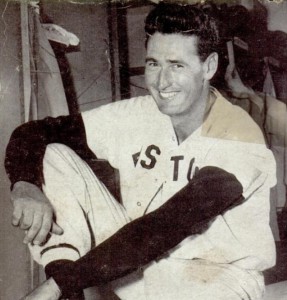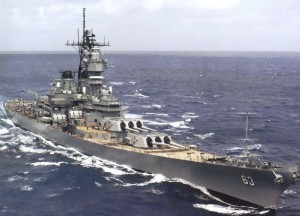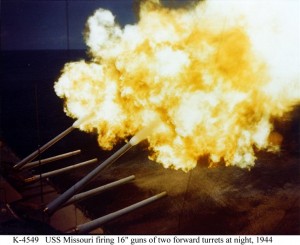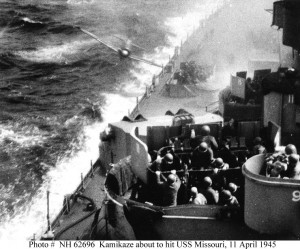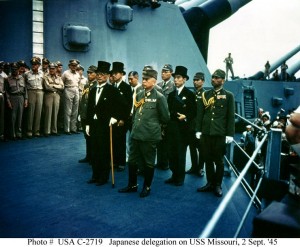Ted Williams
I love this story about him: in 1941, on the last day of the season, Ted’s average stood at .39955, which would have rounded up to .400. Ted’s manager gave him the option of sitting out the double-header to be played that day, so he could protect his record (no-one had hit .400 in a season since 1930). [2] Ted declined, explaining that “if I can’t hit .400 all the way, I don’t deserve it.” Ted had 6 hits in 8 at-bats that day, and finished with a final average of .406. [3]
So, what happened right after the baseball season of 1941? Well, of course the “Day of Infamy”: the Japanese bombed Pearl Harbor on December 7, 1941 and America entered World War Two. At first Ted appealed his “eligible” draft status, since he was his mother’s sole support. He made a public statement that he would join up as soon as he built up his mother’s trust fund a bit. The draft board agreed with him, but public opinion did not, and under some duress and loss of endorsements he enlisted in the Navy on May 22, 1942. [3] Williams could have had an easy assignment, playing baseball for the Navy. Instead he entered flight training to become a fighter pilot, flying the Vought F4U Corsair. His intelligence, eyesight and athletic ability made him a natural pilot, and he excelled in learning and then teaching flying. The war ended, however, while he was awaiting his combat orders.
Ted returned to baseball after being released from the Navy, but remained in the Naval Reserve. In June 1950, the Korean War broke out, and Ted’s baseball career was once again interrupted by military service. Ted was not a saint – he was understandably upset at being called up from the Inactive Reserves when there were people in the Active Reserves not called up. However, he once again declined all offers at an easy assignment and went back to flying status, this time flying the Grumman F9F Panther. In Korea he did see combat, flying 39 combat missions and being awarded the Air Medal [3]. He served part of this time as wingman for another famous aviator, John Glenn.
Vox’s Take: Williams was just one example of the “Greatest Generation”, those Americans with a sense of patriotic duty that overrode any concerns for something mundane like a stellar professional baseball career. One more telling fact about Williams: despite serving in the Korean War, and though he referred to “the Marines” as the best team he ever played for, he was still dominant enough in baseball to be named Player of the Decade, 1951 to 1960.
Sources:
[1] Williams, Ted, Baseball Hall of Fame
[2] .400 Hitters Club, Baseball Almanac
[3] Ted Williams, Wikipedia
